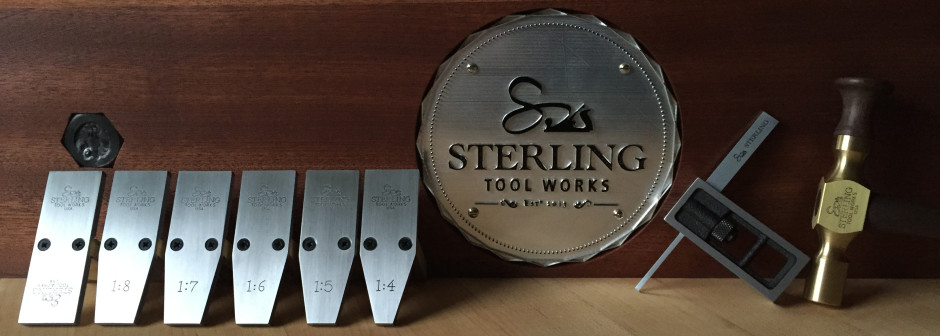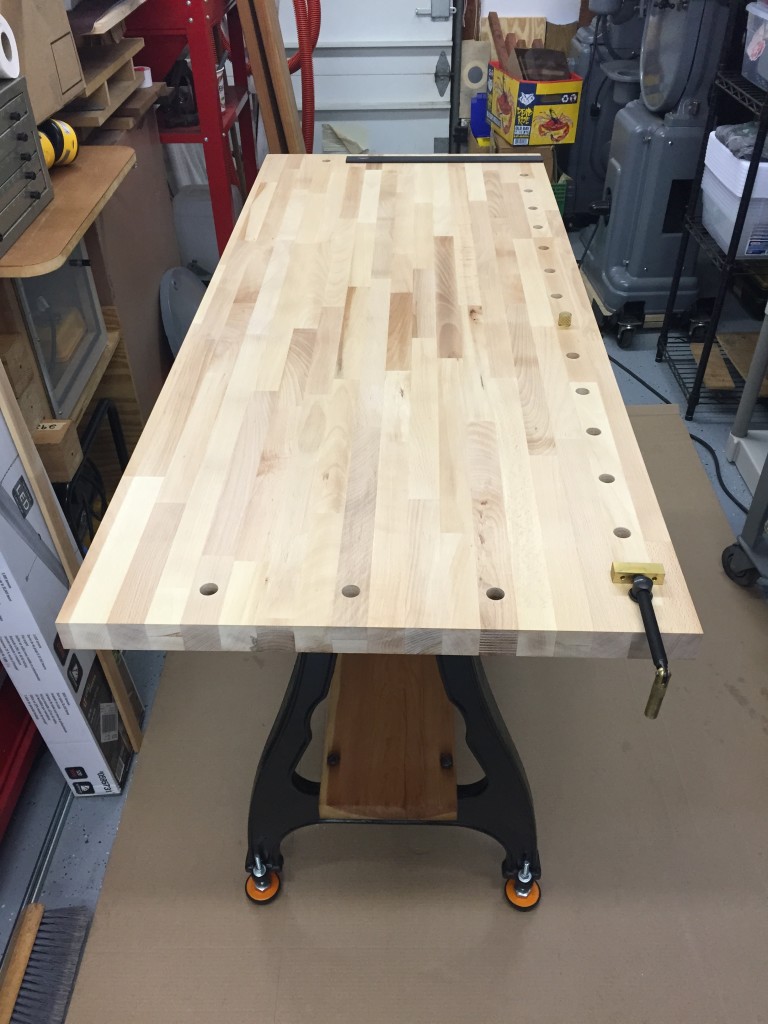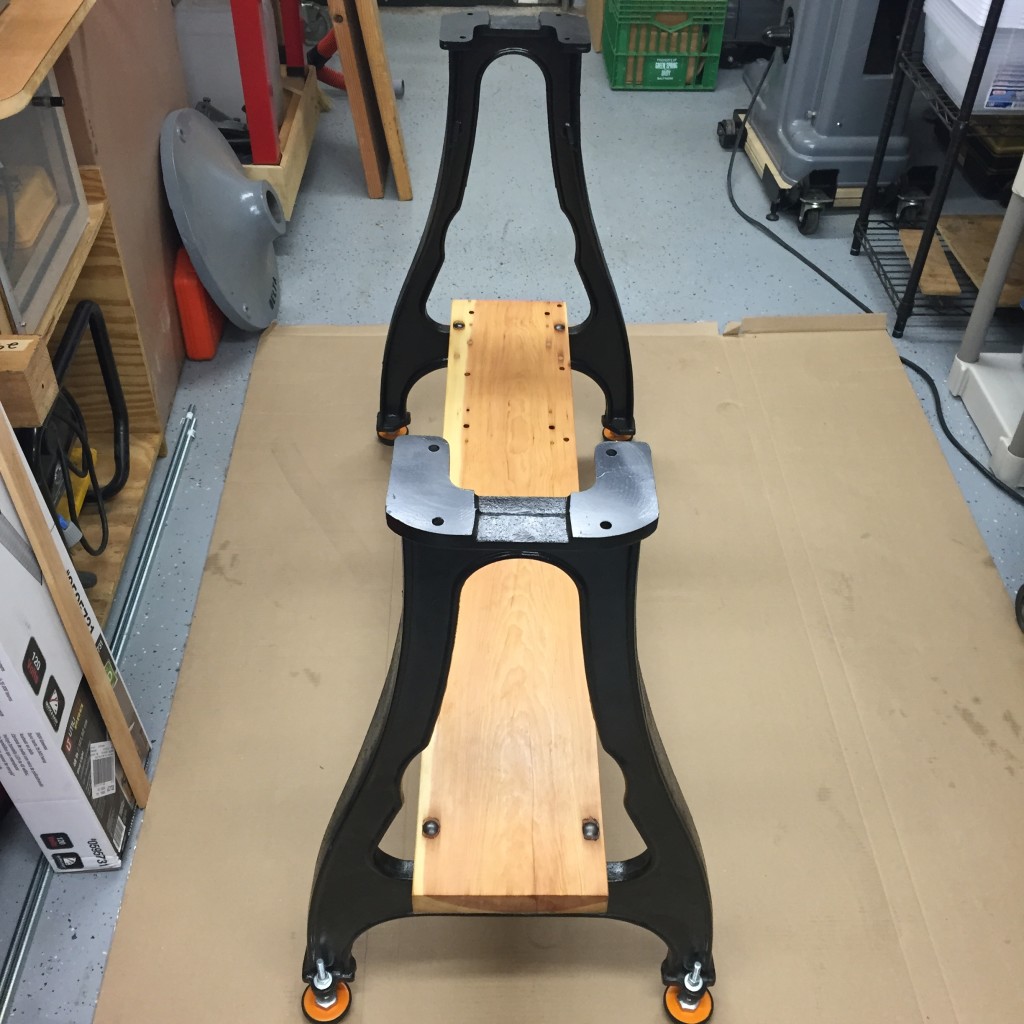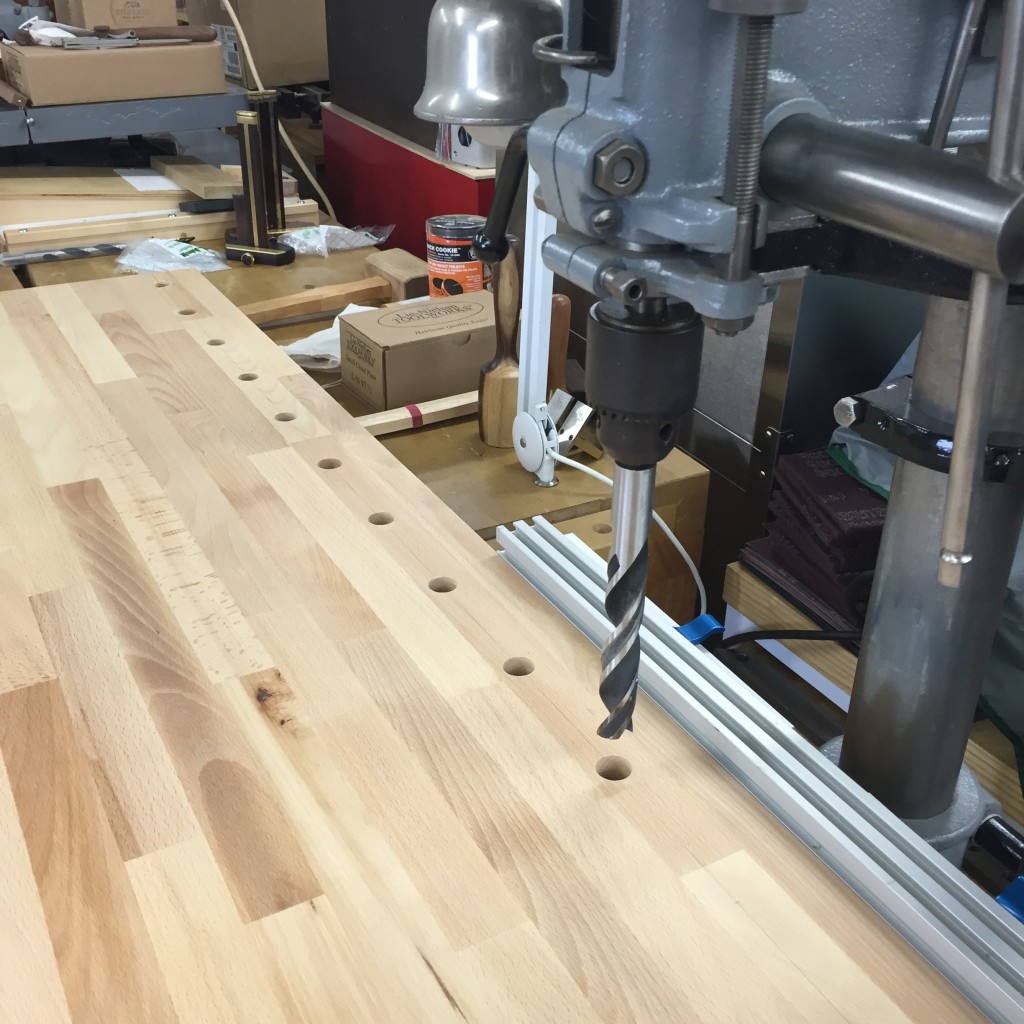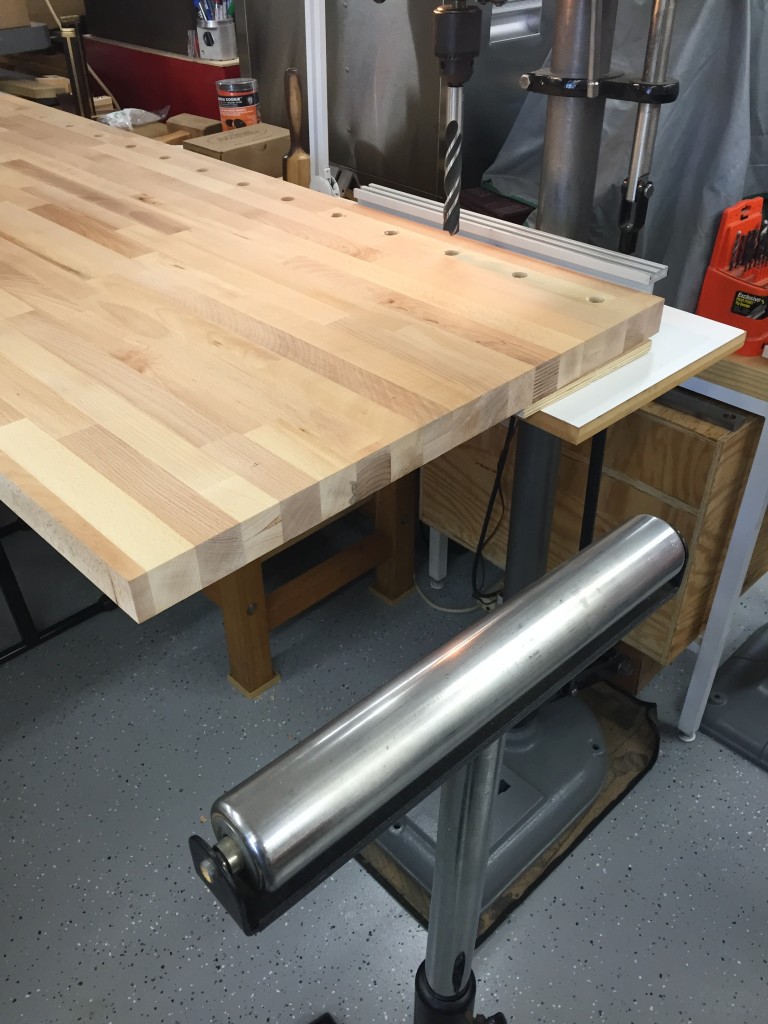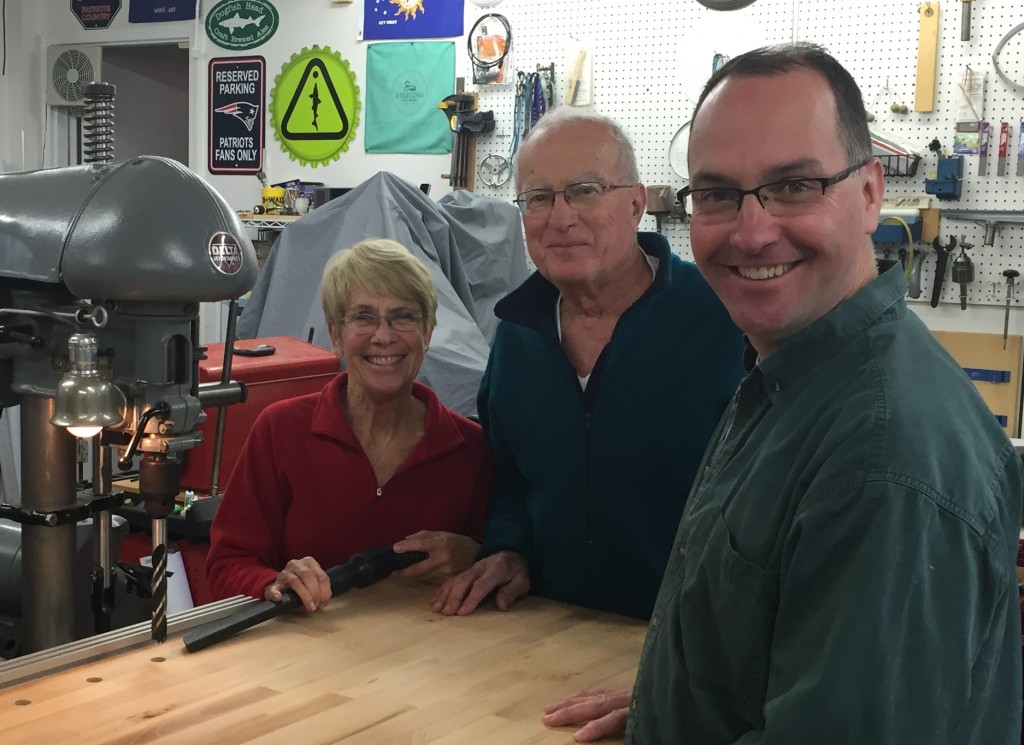During the Holidays I was fortunate to have my family visiting from out of town. Shop time with my father is always special and in addition to reorganizing the shop and many other small projects my Dad helped me build another “show bench”. My original show bench does dual duty as my sharpening station a blog about it can be found here. I know that a few people have adopted this design for their needs where space was limited.
The Version 2 bench came from a need to have a bench in the South East where my parents live. The most difficult thing to attend woodworking shows to have a good bench to demonstrate on. My favorite bench by far is my split top roubo built by Mark Hicks at Plate11 bench (read more here). Realistically the only way I am able to get this bench to shows is to drive it there, and that limits the shows that I can attend. By building this V2 show bench and having it located at my parents it opens up the southeast for more show attendance. I will be debuting this bench at the Charleston SC hand tool event sponsored by Lie-Nielsen.
Material Selection is always important, many of my Insta-gram and FaceBook followers know that I have restored many tools from the 1930’s 40’s and 50’s when they had soul and impeccable quality. The art Deco feel of many of the castings in this era is quite attractive to me.
LEGS: I have always loved the Cast Iron Legs on vintage lathes and over the years was able to find additional legs that I always wanted to use when building a bench or assembly table. These legs were sandblasted and painted black. I was able to use the vintage lower stretcher from a 1930’s lathe, I planed some fresh surfaces to show off the vintage heart pine board and gave it a couple coats of Minwax satin wipe on poly. It is very interesting to note that these boards are one solid piece but have 6 kerfs running 95% of the length underneath to help the board move with changes in humidity without distortion. The Cast Iron Legs provide nice mass so the relatively small and mobile bench doesn’t slide all over the show floor. To help gain a little additional height (I am 6 feet tall and have back issues) and allow leveling as well as bolster the anti-slide needs I mounted 4 machine mounts to the legs available from ENCO here. The part number is KS325-6627. I am using these mounts more and more in the shop and find them very handy for machines. Note that ENCO offers 10% when you buy 4 or more but there are monthly promotional coupons for 10-20% so do some searching (or join their email list) and watch for the promotion.
Top: In 2013 I attended a discussion given at Woodworking In America (WIA) given by Christopher Schwarz the de-facto guru of benches. He spent time talking about benches and materials to get you started, contrary to the dream of many woodworkers to build their own roubo style bench. During this talk I learned about the solid wood countertops offered by Ikea, the name is NUMERÄR. They are available in Birch and Beech in two lengths, 73” and 96”. The slabs are 25.5” wide and 1.5” thick , are unfinished but sanded which ideal. The cost for the 73” version is $129, the 96” version is $169. If this is to be your primary hand tool bench I would suggest that you double up the thickness but for an auxiliary bench the 1.5” is fine.
The edges are rounded over about 3/16” which bother me a little so you can trim or plane them back. I ripped a ¼” from each edge and then eased the new edges with 3-4 passed with a block plane.
Dog holes are very convenient so with the help of my Mother, Father and two out feed rollers my vintage drill press made quick work. The bit is a high quality Colt brad point bit that is made in Germany. Woodcraft no longer carries these high quality bits which is a shame. Dog holes along the 3 edges are on 6” centers except on the ends where I moved to the closest full width run of wood instead of drilling into a glue joint.
I used 1.25” 5/16” lag bolts to attach the top to the legs. I laid the top on the floor and then inverted the leg assembly on the bottom side (note that there were a couple defects on one side of the slab and that is the bottom) Drill 4 blind holes using a depth stop (or blue tape as I did).
Accessories: To meet the needs at a low cost with low weight but provide high quality work holding I added the Veritas plane stop, wonder dog, and a pair of bench dogs. You can make these things as well. The Lee Valley part numbers are:
I of course also use my Moxon vise as most of my demos are cutting dovetails. The Moxon is clamped to the back edge of the bench using wood clamps. You could add more drilled holes for holdfasts but wood clamps are plentiful at shows and lessen the weight of my baggage or shipping charges.
This is a very worthwhile project and a quick and inexpensive way to get a bench built that is highly functional but able to be dissembled to move. Please share some pictures with me if you build a similar bench!
